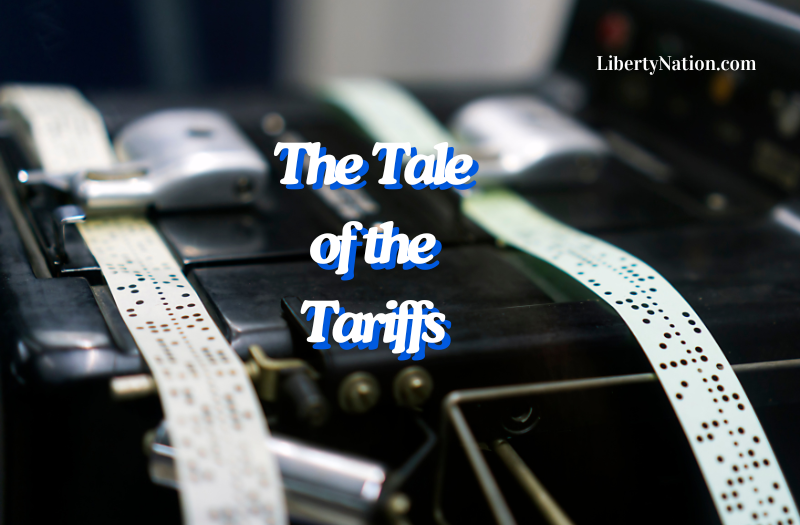
Rather than “elbows up,” Canadian Prime Minister Mark Carney’s elbows have been resting on the table. Despite fierce rhetoric during the 2025 election campaign, Carney and the Liberals have failed to achieve a trade agreement with the United States, pummel the world’s largest economy into submission, or keep the Great White North’s economy intact. Overall, it has been a brutal few months for the prime minister and his Grits, as they have folded faster than the Toronto Maple Leafs in a Game 7 playoff.
Counter Tariffs? Non, Merci
Following an August 21 telephone conversation with President Donald Trump, Prime Minister Carney announced the next day that he would remove most of Ottawa’s retaliatory tariffs on the United States, which were covered under the USMCA. While Canada will maintain counter levies on steel, aluminum, and automobiles, Carney plans to roll back half of the US items slapped with 25% import duties. The adjustments will take effect on September 1.
At a news conference, Carney told reporters that Canada still enjoys a “better deal” with the United States than other countries. “Let’s be absolutely clear: Canada currently has the best trade deal with the United States. While it is different from what we had before, it is still better than that of any country,” the prime minister said.
President Trump, meanwhile, commended Carney’s decision. Speaking to reporters at the Oval Office, he said that he had a “very good call” with Carney and that “I like him.” At the same time, reiterating the central component of his trade agenda, Trump said: “Canada and Mexico have taken a lot of our business over the last 25 to 30 years.”
Pierre Poilievre, the Conservative leader who recently won an Alberta by-election with 80% of the vote, was not as complimentary. “He continues to make concessions without any gains,” Poilievre said at a news conference. “He is showing extraordinary weakness.”
Indeed, despite Trump delaying reciprocal tariffs by a week, he followed through on the higher levy of 35% on August 1 and introduced a transshipment tariff of 40%. The Canadian economy has also not performed well. The country lost 40,800 jobs in July, producer prices soared at a higher-than-expected pace of 0.7% last month, and retail sales fell 0.8%.
CBO Somewhat Bullish on Tariffs
The Congressional Budget Office (CBO), a nonpartisan budget watchdog that the Trump administration has frequently criticized, states that the president’s tariffs could significantly reduce the federal deficit. According to a report released on August 22, the CBO estimated that Trump’s tariffs could lower deficits by a combined $4 trillion over the next decade.
In a blog post, CBO Director Phillip Swagel projected that tariffs could reduce primary deficits by $3.3 trillion, which would lower debt-servicing payments by $700 billion, resulting in a $4 trillion decrease through 2035. This is higher than the initial forecast of almost $3 trillion in June.
However, the White House’s aggressive trade policy may come at a price, Swagel noted. “We estimate that the changes in tariffs, both by the United States and its trading partners, will reduce the size of the U.S. economy,” he wrote. “That reduction in output reflects both negative and positive effects: the negative effects of higher tariffs through channels such as reduced investment and productivity, and the positive effects of additional revenues from tariffs on U.S. imports, which would reduce federal borrowing and increase the funds available for private investment.”
Jerome Powell Turns Dovish
For the second straight year, Federal Reserve Chair Jerome Powell delivered the magic words in his annual – and final – Jackson Hole keynote address: Interest rate reductions are coming.
Despite risks to the dual mandate of maximum employment and price stability, Powell noted that current conditions could allow monetary policymakers “to proceed carefully as we consider changes to our policy stance.” He finished off this part of the speech with something Wall Street has been waiting for all year long: “Nonetheless, with policy in restrictive territory, the baseline outlook and the shifting balance of risks may warrant adjusting our policy stance.”
Investors now think the central bank will reduce the federal funds rate by 25 basis points in September. This sparked a massive rally on Wall Street, with the blue-chip Dow Jones Industrial Average soaring to a new record high.
However, while Powell pivoted from hawkish to dovish, the central bank chief offered some words of caution regarding upside risks to inflation and downside risks to the labor market. He also noted that US economic growth was slowing.
“The effects of tariffs on consumer prices are now clearly visible,” Powell said. “We expect those effects to accumulate over coming months, with high uncertainty about timing and amounts.”
Like the minutes from last month’s Federal Open Market Committee policy meeting, Powell alluded to the lag effect of tariff policy, meaning that it could take time to fully traverse through the economy as supply chains and distribution networks absorb higher import duties.
Additionally, the chief occupant of the Eccles Building thinks a reasonable base case is that tariff effects on inflation “will be relatively short-lived,” reflecting a one-time price adjustment. But the opposite could also transpire during this trade saga: persistent and prolonged inflation challenges. “Come what may, we will not allow a one-time increase in the price level to become an ongoing inflation problem,” Powell said.
















![Israeli Prime Minister showed media photos that he called "fake starving children" and said, "The only deliberate starvation policy that we see in Gaza is the starving of our [Jewish] hostages."](https://www.constitutionpatriots.com/wp-content/uploads/2025/08/UN-Dropped-Measurement-for-Famine-by-50-Giving-Media-What-350x250.jpg)
